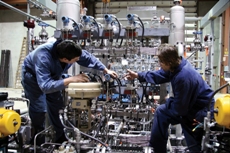
Any person who is required to use equipment at the workplace needs to receive an adequate level of training in order to comply with health and safety requirements.
There are several ways by which your business can approach your training needs to meet certain minimum standards. You can either take the view that the bare minimum to meet legislation will suffice, or hopefully, you will take a fresher approach to equipment training and seek to empower employees with the skills and knowledge that will help them to develop a greater level of competence.
Adequate training
It is actually quite a challenge to clearly define what constitutes an adequate training even when you follow HSE guidelines and consider the terms of PUWER, which covers the use of work equipment. The Provision and Use of Work Equipment Regulations 1998 (PUWER) sets out what training and precautions should be taken when using work equipment.
Companies will provide specific training for the equipment that they provide for hire and if you are intending on using equipment that you are not entirely familiar with on a regular basis, external training will help keep you on the right side of PUWER requirements.
There are a number of factors to take into consideration when drawing up your list of training requirements for staff.
Training will need to take into account the job or activity involved as well as the current levels of competence of workers. Training also needs to be tailored specifically for the work equipment being used, so that the relevant dangers and issues can be comprehensively dealt with.
Equipment covered
It is sometimes confusing or unclear what equipment is covered by PUWER regulations.
The general rule is that any equipment which is being used by an employee at work is covered and training is necessary. The list of equipment is exhaustive and whilst you would understand that training was needed to operate circular saws, power presses and cutting equipment, you may be surprised to learn that hammers, ladders and even photocopiers are considered as equipment that require adequate training to operate.
If you employ people or a self-employed, and use or provide equipment for use at work, the regulations are applicable.
Controlling risk
It makes sound business sense to ensure that anyone using work equipment receives a comprehensive level of appropriate training as it will allow them to do their job as efficiently as possible.
It is also your responsibility as an employer to try and manage and control risks that are created by the use of the equipment being provided.
What this means is that you need to ensure that suitable guards and protection devices are utilised where necessary and personal protective equipment is supplied as well.
Another measure to minimise the prospect of an accident at work while using equipment, is to ensure that regular maintenance is performed on the equipment and a good level of information, training and instruction is provided before any worker is allowed to assume control for themselves.
Some equipment is obviously more dangerous than others, but if you take a proactive approach to equipment training, it will have many positive benefits for your business, beyond keeping employees as safe as possible.
Robert James is a senior health and safety executive. He likes to share his insights with an online audience and has already offered his suggestions across a number of websites. For equipment hire and training in using it in the UK see www.aerialplatforms.co.uk






